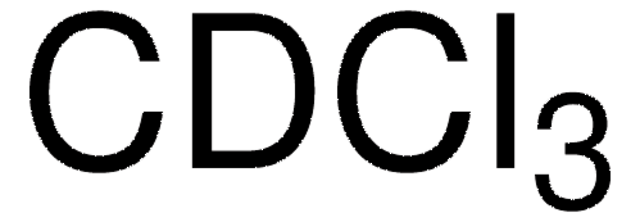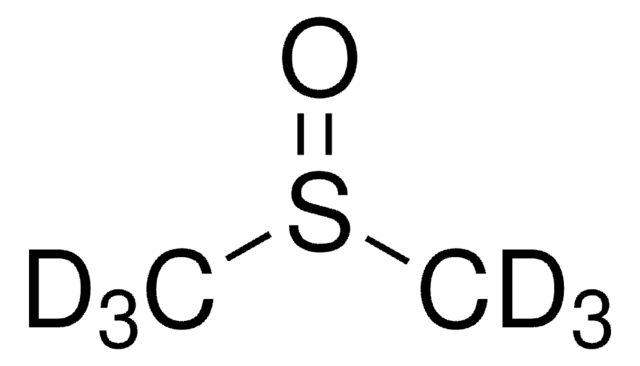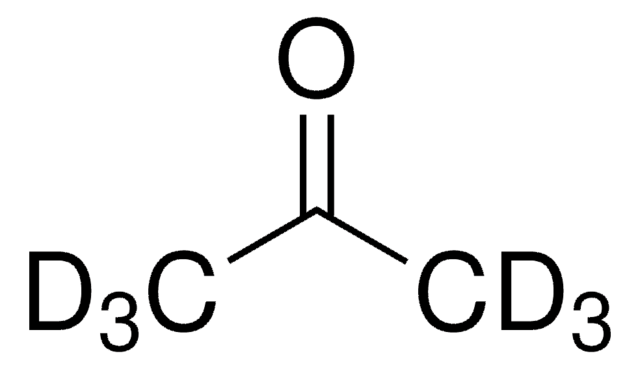530735
Chloroform-d
≥99.8 atom % D, contains 0.5 wt. % silver foil as stabilizer, 0.03 % (v/v) TMS
Synonym(e):
Deuterochloroform
About This Item
Empfohlene Produkte
Isotopenreinheit
≥99.8 atom % D
Qualitätsniveau
Assay
≥99% (CP)
Form
liquid
Enthält
0.5 wt. % silver foil as stabilizer
0.03 % (v/v) TMS
Methode(n)
NMR: suitable
Verunreinigungen
≤0.0100% water
water
Brechungsindex
n20/D 1.444 (lit.)
bp
60.9 °C (lit.)
mp (Schmelzpunkt)
−64 °C (lit.)
Dichte
1.500 g/mL at 25 °C (lit.)
Massenverschiebung
M+1
SMILES String
[2H]C(Cl)(Cl)Cl
InChI
1S/CHCl3/c2-1(3)4/h1H/i1D
InChIKey
HEDRZPFGACZZDS-MICDWDOJSA-N
Suchen Sie nach ähnlichen Produkten? Aufrufen Leitfaden zum Produktvergleich
Verwandte Kategorien
Allgemeine Beschreibung
Anwendung
Empfohlene Produkte
Signalwort
Danger
Gefahreneinstufungen
Acute Tox. 3 Inhalation - Acute Tox. 4 Oral - Carc. 2 - Eye Irrit. 2 - Repr. 2 - Skin Irrit. 2 - STOT RE 1 Oral - STOT SE 3
Zielorgane
Central nervous system, Liver,Kidney
WGK
WGK 3
Persönliche Schutzausrüstung
Eyeshields, Faceshields, Gloves
Analysenzertifikate (COA)
Suchen Sie nach Analysenzertifikate (COA), indem Sie die Lot-/Chargennummer des Produkts eingeben. Lot- und Chargennummern sind auf dem Produktetikett hinter den Wörtern ‘Lot’ oder ‘Batch’ (Lot oder Charge) zu finden.
Besitzen Sie dieses Produkt bereits?
In der Dokumentenbibliothek finden Sie die Dokumentation zu den Produkten, die Sie kürzlich erworben haben.
Kunden haben sich ebenfalls angesehen
Verwandter Inhalt
Die NMR-Spektroskopie ist eine analytische Methode zur Bestimmung der Molekularstruktur, chemischen Zusammensetzung und Reinheit. In der NMR wird die Energie detektiert, die aufgrund von Kernspinzuständen in Gegenwart eines starken Magnetfeldes absorbiert wird.
NMR spectroscopy elucidates molecular structure and purity via nuclear spin states in a strong magnetic field.
Unser Team von Wissenschaftlern verfügt über Erfahrung in allen Forschungsbereichen einschließlich Life Science, Materialwissenschaften, chemischer Synthese, Chromatographie, Analytik und vielen mehr..
Setzen Sie sich mit dem technischen Dienst in Verbindung.




